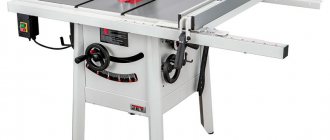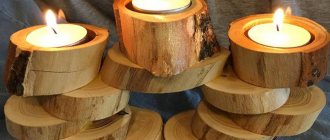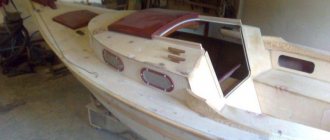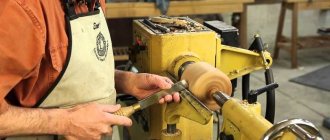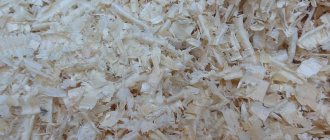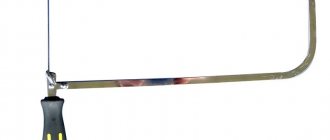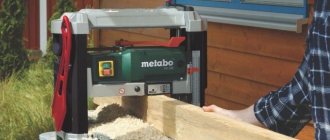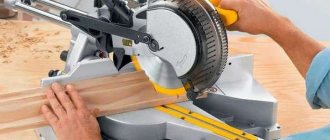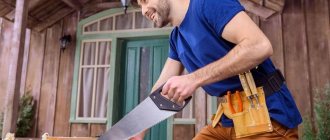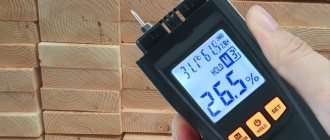Even selected moldings have a certain percentage of error in the geometry of the planes. But the cost of ordering precise finishing is justified only in the case of one or two boards or timber. Therefore, the calibration of large quantities of lumber must be carried out directly at the place of its use. See our rating of thicknessing machines (RS), and you can evaluate the equipment for the profitable work of a carpentry workshop.
Main characteristics of thicknessing machines
| Criterias of choice | Scope of criteria |
| Power | A PC with a commutator motor, consuming up to 1.6 kW, operates effectively only in a gentle mode. Needs periodic rest. The motor is sensitive to high temperatures. For personal use. |
| Processing of workpieces on machines with engines more powerful than 1.6 kW is possible with a more significant load. The maximum possible layer can be removed from a narrow workpiece. High-quality processing of a wide board (even for a 2.2 kW motor) is only possible with minimal planing. A thicknessing machine with such characteristics is acceptable for intensive work. Most models are used for commercial purposes. | |
| Permissible dimensions of the workpiece | Describe the range of workpiece sizes that can be processed on a PC. This factor should be taken into account for the correct selection of woodworking equipment, depending on the available size of lumber. |
| Planing depth per pass | The limit of possibilities for the working elements of the planing shaft is in the range of 2-3 mm. It is possible to work with such indicators without excessive load on the engine and gearboxes only with narrow workpieces. |
| By adhering to the thicknessing depth (1-1.5 mm) recommended by the manufacturer, you can count on a high-quality result - both with hard rocks and with relatively damp (more than 20%) material. | |
| Thicknesser table length | A working surface with a length of more than 500 mm allows you to comfortably process meter-long workpieces. And from a 771 mm table (Makita 2012 NB), not even a one and a half meter board will fall off. |
| Stable 255 mm tables (Anchor Corvette 24) guarantee high-quality results only with material of the same length. It is not always convenient to load longer parts correctly into the surface planer. And after leaving the planing shaft, they will move down. Which will lead to the formation of differences (“steps”) at the ends of the workpiece. | |
| Weight | Helps to compare the user's capabilities for installing, moving or transporting the surface planer. So the weight of the machine is within 30 kg, allowing you to work on a stable table, in any convenient place. Models in the range from 40 to 50 kg are also quite mobile, but are most often installed on mobile or stationary stands of various modifications. Machines weighing over 60 kg are a stationary option. |
| Design features |
|
| Torque transmission method | Rotation is transmitted to the planing shaft through a gear reducer (even minimal free play of parts is eliminated). The automatic workpiece feeding system can be equipped with both a belt (low noise level, minimal load on the drive) and a chain (wear-resistant, reliable gearbox) transmission. |
| Availability of consumables and spare parts | The profitability of equipment under any operating conditions is possible only with free access to spare parts and the presence of a local service team. |
As for the number of knives on the planing shaft, well-known models have two of them in the basic configuration. But they can be maintenance-free, re-sharpenable and (as a subtype) double-sided. And only stationary heavy machines can have three or four knives on each of the working elements. The option of selecting a non-standard shaft, again, occurs only in the case of powerful equipment. And the commutator motors of popular thicknessing machines do not have sufficient potential to operate non-standard consumables (3-, 4-knife, screw shafts or multi-knife “corn”) with decent efficiency. Even though the latter option has proven its worth when used on industrial thicknessers and jointing machines.
Don't miss the fundamental difference between similar processes
Several passes of piece lumber with broken geometry on the planer table make it possible to obtain a right angle of adjacent surfaces of the workpiece. And the resulting planes will be used as a basis for further calibration. That is, by passing planed lumber through a planer, you get perfectly smooth parallel surfaces and a right angle along the entire length of the board or beam.
The interchangeability of these processing steps is excluded:
- The thicknesser does not correct the overall geometry of the part (there is no stop perpendicular to the work table, the board is held by pressure rollers);
- The potential of the jointer only allows you to correct all kinds of “propellers”, “sabers”, “skis” and other variants of molding deformation. By removing only the protruding parts of adjacent planes of the curved board, you get an acceptable workpiece for subsequent calibration on a surface planer. Preliminary jointing of a curved board (timber) on all sides allows you to subsequently reduce the load on the pressure rollers of the planer. Thus increasing the operational potential of expensive equipment.
Table of thicknessing machines and their characteristics
| Model | power, kWt | Maximum permissible dimensions of the workpiece (H-height, B-width), mm | Planing depth (max/working), mm | price, rub. |
| Budget models for light use | ||||
| 1. Encore Corvette 24 (with planing table) | 1.25 | H-5-120, B-204 | 2 / 1 | 18200 |
| 2. Special SRM-2000 | 2.0 | H-6-160, B-330 | 3 / 1.5 | 20990 |
| 3. Interskol RS 330-1500 | 1.5 | H-13-152/B-19-330 | 2.8 / 0.8 | 25389 |
| Thicknessing machines for a creative workshop | ||||
| 4. JET JWP 12 | 1.8 | H-5-153, B-318 | 2.5 / 1 | 26000 |
| 5. Kraton WMT 318 | 1.5 | H-5-153, B-318 | 3 / 1.5 | 26500 |
| 6. JET JPT 10b (with planing table) | 1.5 | H-120, B-254 | 3 / 1 | 31500 |
| 7. Hitachi p13f | 1.8 | H-3.2-152.4, B-330 | 2.4 / 1 | 35390 |
| Precision equipment for a small commercial carpentry shop | ||||
| 8. Makita 2012 NB | 1.65 | H-155, B-304 | 3 / 1 | 40590 |
| 9. DeWalt 733/a | 1.8 | H-152, B-317 | 2 / 1 | 52243 |
| 10. Metabo HC 260 C WNB (with planing table) | 2.2 | H-160, B-260 | 3 / 1 | 73999 |
Table of comparative characteristics of planer-thicknesser machines
To understand which machine to choose for work – a jointer or a surface planer, you need to study their characteristics and technical features.
| Feature/Description | Jointer | Thicknesser |
| Processed material | Tree | Tree |
| Purpose | Straight planing | Flat planing |
| Cutting tool | Knife shaft | Knife shaft |
| Shaft location | Bottom of the workpiece | Top of the workpiece |
| Thickness calibration | No | Yes |
A jointer is perfect if you need to prepare the base plane of a wooden piece. The thicknesser allows you not only to level the board, but also to make the second side of the workpiece parallel to the first side.
Encore Corvette 24 – 18200₽
The universal model Encore Corvette 24 is designed for non-intensive sizing of lumber.
The layout of the equipment allows for rough planing, jointing at different angles and thicknessing of the workpiece. The machine is equipped with a magnetic starter and thermal motor protection. The operating potential is designed for use in a home workshop. In fact, the Encore Corvette 24 is a budget analogue of the JET JPT 10b model. This is evidenced by the similar design of the device, the identical design of the gearbox of the automatic workpiece feeding system, and the arrangement of the elements of the planing unit. There are minor differences in the appearance and some dimensions of these thicknessing machines. In addition, the Corvette compares favorably in price.
The owner will also be pleased with the speed of drawing the workpiece (with the same working planing depth of 1 mm, the Corvette claims 9000 rpm, while the JET produces no more than 6000 rpm).
Which contributes to a significant reduction in labor costs. Main technical characteristics of Encore Corvette 24
| Characteristics | Values |
| power, kWt | 1.25 |
| Shaft rotation speed, rpm | 8000 |
| Automatic feed speed of workpiece, m/min | 8 |
| Planing depth (maximum / working), mm | 2 / 1 |
| Limit dimensions of the workpiece for thicknesser (H-height / B-width), mm | H-5-120/B-204 |
| Length of thicknesser table (jointer), mm | 255 (737) |
| Design features | Magnetic starter, belt drive, motor thermal protection |
| Add. equipment | Pusher, chip guard, hex key |
| Weight, kg | 26 |
| Development/production | Russia / China |
| Cost, rub. | 18200 |
Watch a full video review revealing the design and control features of the Enkor Corvette 24 machine:
Special SRM-2000 – 20990₽
The frame structure of the SRM-2000 body, assembled on a cast base, provides the machine with sufficient rigidity. Which is useful for effective calibration of timber, edged and unedged boards, up to 330 mm wide. The height of the workpiece can be in the range of 6-160 mm. The minimum length of lumber is limited by the distance between the edges of the rubberized rollers. The maximum indicator is not limited in any way. That is, this equipment is able to satisfy any user needs in the construction, repair and finishing of residential and auxiliary premises.
The transmission of torque to the working shaft from a powerful commutator motor is carried out via a belt drive.
Due to this, the noise level and the likelihood of damage to the power unit are reduced when the load increases beyond the calculated values. Auxiliary rollers on the edges of the table enlargers and the upper surface of the machine simplify working with long lengths. Automatic overload protection and a block that prevents the equipment from turning on after a drop in mains voltage are responsible for operational safety. Main technical characteristics of Spets SRM-2000
| Characteristics | Values |
| power, kWt | 2.0 |
| Shaft rotation speed, rpm | 8000 |
| Automatic feed speed of workpiece, m/min | 8 |
| Planing depth (maximum / working), mm | 3 / 1.5 |
| Limit dimensions of the workpiece (H-height / B-width), mm | H-6-160/B-330 |
| Thicknessing table length, mm | 350 |
| Design features | Steel frame on a cast base, planing depth adjustment knob, auxiliary rollers to facilitate workpiece feeding |
| Add. equipment | Exhaust pipe, knife installation template, installation tools |
| Weight, kg | 31 |
| Development/production | Russia / China |
| Cost, rub. | 20990 |
Watch video review of Special SRM 2000:
Interskol RS 330 1500 – 25400₽
Interskol RS is one of the few successful low-cost developments.
It stands out not only for its reasonable cost, but also for its impressive operating potential (the thermal protection relay is responsible for the duration of operation of the commutator motor). The security system is also at the proper level (the power button is hidden under a folding cover, the power button is duplicated by a wide “fungus” located behind the protective cover). The budget model is intended for personal use only. And in the absence of excessive load (the source of which may be material with natural moisture), it will please the owner. It has a low (for a chain drive of shafts) noise level. Automatic broaching allows you to count on a decent result for thicknessing wood of any species.
The high-quality level of processing is achieved not only due to the high speed of the planing shaft with two carbide knives.
The organization of chip removal from the workspace is also important. Why the machine includes a plastic catcher body and an adapter for connecting a vacuum cleaner. Main technical characteristics of Interskol RS 330 1500
| Characteristics | Values |
| power, kWt | 1.5 |
| Shaft rotation speed, rpm | 9000 |
| Automatic feed speed of workpiece, m/min | 7 |
| Planing depth (maximum / working), mm | 2.8 / 0.8 |
| Limit dimensions of the workpiece (H-height / B-width), mm | H-13-152/B-19-330 |
| Thicknessing table length, mm | 350 |
| Design features | Automatic feed with chain reducer, thermal protection relay, upper passive rollers for moving long items |
| Add. equipment | Template for installing knives, chip guard, set of necessary keys |
| Weight, kg | 33 |
| Development/production | Russia / China |
| Cost, rub. | 25400 |
Watch a short video review revealing the working potential of the Interskol RS 330 1500 machine:
Varieties
Thicknesser is not only a classic marking tool, but also a mechanical machine that carries out marking and cutting of parts.
Carpentry
The design is a wooden block, on both sides of which movable slats with working needles and pins are attached. The components of the rails and holes in the block have a rectangular or square cross-section, which prevents the working parts from turning during use. The specified size is fixed perpendicular to the located peg in the block.
The tool is universal, suitable for working with parts of different sizes. The needles and pins on both sides are usually different; the necessary attachments are used for the job.
A carpentry thicknesser is also used as a center finder. The block and slats with needles are strictly perpendicular to each other, a ruler is attached between them with a bisector, and the center of the diameter is drawn.
The carpenter's thicknesser is one-sided (only one strip is attached to the block) . Used when working with one type of material and workpieces.
Another type is a tool for manually working with circuits. Instead of a needle there is a pencil clip. Used as a compass to measure and plot radii parallel to lines.
Locksmith
The marking device has a high fixed block with long scriber rods. The stand is attached to the base, the marking organs move in a circle. The distance between the lines is set by moving the rods along the stand or by dragging the scribe along the rod. One of the models is a height gauge.
Difference
Carpentry and metalwork thicknessers differ only in the way they move relative to the workpiece:
- Carpentry. There is an emphasis on the edge of the workpiece. The working end must be processed with high quality, the board is firmly pressed to the base holder.
- Locksmith. Move along with the base parallel to the workpiece.
In both cases, the tool is adjusted before use according to the working diagrams.
Equipment with a printed scale allows you to transfer dimensions from drawings and make measurements accurate to tenths of a millimeter.
JET JWP 12 – 26000₽
JET JWR 12 is a portable amateur machine that attracts attention due to the ratio of the power of a lightweight brushed motor, automatic feed speed and high rotation speed of the planing shaft.
The chip removal system has been thought out. The quality of the folding tables (with longitudinal rollers) is also excellent. The JET JWP 12 protective system consists of a “claw” protection that catches the workpiece during a reverse impact and a thermal relay unit (with a forced activation key).
The machine is widely in demand among artisan carpenters to perform tasks requiring high precision.
And only the ever-present need to clean all the sinuses of the machine from chips does not allow us to classify the JET JWP 12 as specialized professional equipment. Main technical characteristics of JET JWP 12
| Characteristics | Values |
| power, kWt | 1.8 |
| Shaft rotation speed, rpm | 9000 |
| Automatic feed speed of workpiece, m/min | 7 |
| Planing depth (maximum / working), mm | 2.5 / 1 |
| Limit dimensions of the workpiece (H-height / B-width), mm | H-153, B-318 |
| Thicknessing table length (with additional tables), mm | 295 (690) |
| Design features | Motor thermal protection, automatic workpiece feeding |
| Add. equipment | Additional (feeding, unloading) tables, plastic boot cover, adapter for chip removal, set of keys |
| Weight, kg | 27 |
| Development/production | Switzerland / Switzerland, China |
| Cost, rub. | 26000 |
Watch a video review describing the design features and operation of JET JWP 12:
Make or buy
Even the simplest universal marking thicknesser is expensive. You should buy it when the work requires high precision. For a carpentry workshop or personal household, you can make a marking thicknesser yourself.
Hardwood is used for manufacturing so that the product retains its characteristics longer.
To apply scratches, special pins with sharpened needles are used.
How to do
To make a homemade marking thicknesser you will need:
- 2 wooden slats,
- calipers,
- router,
- pencil,
- ruler,
- pins or needles.
For convenience of work, you can use the diagram.
Dimensions when processing wood workpieces are observed to obtain a reliable and rigid connection.
Step 1: making the barbell
The cross-section of the rod is 19 x 19 mm. The lath is taken with sides of at least 20 x 20 mm and processed to the specified parameters. The sides should be even. After manufacturing, the dimensions are checked with a caliper. You can partially round the top plane of the rod using part of a cutter.
Step 2: grinding the block
When making the block, it is necessary to maintain the accuracy of the dimensions of the hole into which the rod will be inserted. A wedge is provided for fixation. It is inserted from above and secures the working element in the desired position.
For ease of cutting, make a paper template and glue it to the workpiece . The shape of the block is cut out from it. Then the edges are processed. The hole is made with a chisel and files of various shapes. Dimensions are constantly checked using control tools. The top of the window should be the same beveled as that of the bar.
Holes for needles are drilled in advance at the ends.
Step 3: Wedge
The smallest part is carved from a thin board. Processing is carried out along the fibers to maintain the strength of the wedge. A paper template is cut out and the part is machined from it.
Kraton WMT 318 – 26500₽
A simple and popular thicknessing machine Cardboard WMT 318 is assembled on a rigid frame frame. Which, given its relatively modest size and not very heavy weight, is a significant factor. Determining the accuracy and reliability of equipment for a small workshop. They also purchase this model for work on the road.
Starting is carried out using a key located under the protective cap. Nearby there is a button to activate the thermostatic unit. The movable planing block located above the work table moves (in the vertical plane). Precise control is provided by the handle located on top.
One of the key features that distinguishes this model is dynamic braking - a process that reduces the “free run” time (rotation by inertia) of the engine.
Folding extensions and automatic feeding of the workpiece under the planing shaft greatly simplify the work with long lumber. Main technical characteristics of Kraton WMT 318
| Characteristics | Values |
| power, kWt | 1.5 |
| Shaft rotation speed, rpm | 8 |
| Automatic feed speed of workpiece, m/min | 8 |
| Planing depth (maximum / working), mm | 3 / 1.5 |
| Limit dimensions of the workpiece (H-height / B-width), mm | H-5-153, B-318 |
| Thicknessing table length, mm | 580 |
| Design features | Folding sections of the work table, a cap to prevent accidental start-up, dynamic braking, cross shafts at the ends of the table and the top of the body |
| Add. equipment | |
| Weight, kg | 31 |
| Development/production | Russia / Russia, Southeast Asian countries |
| Cost, rub. | 26500 |
Watch a short video review of the device and capabilities of the Kraton WMT 318 machine:
Scope of application
All woodworking enterprises have such equipment. It helps solve the following problems:
- Even out the thickness of the workpieces.
- Accurately cut panels and boards intended for finishing floors and walls.
- Making a wooden surface perfectly smooth.
- Perform planar processing.
Before starting to work on the thickness planer, it is necessary to carry out a thorough adjustment. What to pay special attention to:
- The machine is installed on the desktop clearly and correctly, without distortions.
- Do not place the grooved roller low.
- Adjust the pressure of the rear pressure pad on the surface being treated.
- Make sure that there is no very high pressure on the lower rollers, thanks to which the wood is fed above the table level.
- Check the functioning of the exhauster. If it malfunctions, chips may end up in the rear main roller.
- Look at the installation of the cap visor.
JET JPT 10b – 31500₽
Among the equipment of the mid-price category, it is difficult to find another universal machine with the same number of adjustments and similar operating accuracy. as JET JPT 10b. In addition, at the stated rotation speed of the planing shaft, the feed speed of the workpiece is quite low. But not so much that a 1.5 kW commutator motor would not cope with the automatic running of a board or beam. In general, this ratio has a positive effect on the quality of wood processing.
In light of such features, the system that controls engine temperature is perceived as a mandatory function.
And adjusting the planing depth and the position of the jointer stop are not considered exceptional capabilities. Fixing the thicknessing table in a given position successfully complements the popular opinion about high-quality multifunctional equipment. Main technical characteristics of JET JPT 10b
| Characteristics | Values |
| power, kWt | 1.5 |
| Shaft rotation speed, rpm | 9000 |
| Automatic feed speed of workpiece, m/min | 6 |
| Planing depth (maximum / working), mm | 3 / 1 |
| Limit dimensions of the workpiece for thicknesser (H-height / B-width), mm | H-120, B-254 |
| Length of thicknesser table (jointer), mm | 305 (965) |
| Design features | Thermal relay, mechanical system for fixing the planing table, electronic controls are located on the side surface of the machine |
| Add. equipment | Planing shaft guard on the top table, a casing with a socket and an adapter for connecting a chip ejector, a set of keys, a device for installing a planing knife, hand stops for safe operation |
| Weight, kg | 34 |
| Development/production | Switzerland / Switzerland, China |
| Cost, rub. | 31500 |
Watch video review:
Original idea
The essence of the original idea is that the described machine will be made on the basis of a drilling machine. In addition, on the basis of the same drilling machine, you can build other devices: lathes and grinders. Their description is presented in the following articles:
- DIY wood lathe. Description, drawing, video.
- Homemade grinding machine from a drill. Description, drawings, video.
These articles, like this one, detail the entire sequence of their creation and technological operations, and include photo and video materials. The fact that you can make some kind of universal base and, as necessary, give it the desired functionality, replacing only some elements, while getting a set of machines: lathe, drilling, thickness planer and grinding machines, makes this idea very valuable.
| Drilling | Turning | Grinding |
This solution is convenient, universal and unified.
Hitachi p13f – 35390₽
Precise adjustment of the planing depth and high rotation speed of the double-knife shaft indicate that Hitachi p13f belongs to the professional class.
equipment. The working potential of which allows you to process lumber for the production of furniture, windows, doors, all kinds of spatial structures and coverings from piece lumber. The machine is equipped with an automatic feeding system. With the correct setting of the surface planer and the appropriate dimensions of the board (beam), there are no problems in operation. The user's task is to bring the workpiece to the receiving roller and remove the planed part from the extended extension of the work table.
Torque is transmitted to the autofeed rollers through a gearbox.
The thermal relay prevents wear of the power unit during operation with heavy loads. The start button, protected by a cover, prevents starting the engine by accidental pressing. The installed chip guard will prevent sawdust from penetrating into the open cavities of the machine. Main technical characteristics of Hitachi p13f
| Characteristics | Values |
| power, kWt | 1.8 |
| Shaft rotation speed, rpm | 9250 |
| Automatic feed speed of workpiece, m/min | 7.2 |
| Planing depth (maximum / working), mm | 2.4 / 1 |
| Limit dimensions of the workpiece (H-height / B-width), mm | H-3.2-152.4/B-330 |
| Design features | Retractable work table extensions, thermal protection, planing shaft locking lever, tool compartment, template for installing knives |
| Add. equipment | Stand, hardware, set of keys |
| Weight with stand, kg | 46 |
| Development/production | Japan / Japan, USA, China |
| Cost, rub. | 35390 |
Thicknesser machines
Helpful information
Thicknessing machines are designed for efficient removal of chips along the thickness of a prepared wooden workpiece, fed manually or automatically. In production conditions, processing of a wooden workpiece is carried out after the jointing operation.
Thicknesser provides high precision plane processing of bars, boards and other woodworking products. The knife shaft of the thicknesser is located above the work table. There are productive models of thicknessing machines in which the cutting knives are located both below and above. Precise installation of knives is carried out using a special ruler located on the body.
To work on a surface planer, you need planed boards with a flat surface. The functionality and performance of unique equipment determines the widespread use of machines in the woodworking industry. The use of thicknessing machines is an indicator of the technical equipment of enterprises that successfully solve the problems of positioning their products on the market.
The thicknesser machine is not intended for eliminating defects in wooden parts; the underside of the thicknesser blanks must be flat, which is achieved by jointing.
Planer-thicknesser machines perform preliminary operations on woodworking materials, eliminating unevenness in wooden parts that could appear as a result of insufficient drying or the use of low-quality prepared material. The classic equipment includes a massive frame and a work table, consisting of two parts, one part is the feeder, the other serves as the receiver. A knife shaft is installed between the working surfaces. The number of knives can vary between 1-3 cutting units.
A household thicknesser is useful in a home workshop and for servicing the needs of a country house, the needs of which are unlikely to be served by hand tools or portable power tools. On the tool market, many manufacturers offer high-quality household planer surface planers, the prices of which vary within an affordable price range.
You can buy a thicknessing machine from professional manufacturers or take advantage of the offers of trading platforms. The online store City of Tools offers a wide range of tools from global manufacturers. When operating woodworking machines, one should not forget about working accessories for work safety.
If you have difficulty choosing a reliable tool, seek advice from the specialists of our online store, who will immediately answer your questions and select specifically for you several options to choose from that are necessary to solve your problems.
Makita 2012 NB – 40590₽
Professionals say that reducing the backlash of the working unit is possible only if a frame housing and 4 guide posts are provided.
In the Makita 2012 NB model, possible displacements are also leveled due to compression springs and steel balls at the base of the screws. Double insulation of the motor allows you to work without connecting the machine to a ground loop. The rollers of the automatic feed system are covered with light rubber (therefore, when slipping, no marks remain on the workpiece). Due to the presence of springs at the interface between the working platform and the guides, the formation of “steps” at the edges of the workpiece is minimized.
Factory adjustment is accurate.
Does not get lost either during transportation or after replacing knives (only according to the template). And only after maintenance this model requires utmost attention when correcting the position of the guides. Main technical characteristics of Makita 2012 NB
| Characteristics | Values |
| power, kWt | 1.65 |
| Shaft rotation speed, rpm | 8500 |
| Automatic feed speed of workpiece, m/min | 8.5 |
| Planing depth (maximum / working), mm | 3 / 1 |
| Limit dimensions of the workpiece (H-height / B-width), mm | H-155, B-304 |
| Length of thicknesser table (jointer), mm | 771 |
| Design features | Double insulation of the motor, planing unit on four supports, compression springs and support balls at the base of the adjusting screw, minimum thickness limiter (3-100 mm) of the workpiece |
| Add. equipment | Templates for installing knives, a set of keys, a removable tool case, a nozzle for removing chips |
| Weight, kg | 28.1 |
| Development/production | Japan / Japan, China |
| Cost, rub. | 40590 |
Watch video review of Makita 2012 NB:
DeWalt 733 – 52243₽
The manufacturer developed this DeWalt 733 model, designed for professional use, specifically for sale on the foreign market (American versions, marked “735”, have 3 knives on the working shaft and are powered from a 120-volt network).
And each implemented development definitely influenced the overall impression of practitioners. Rigid locking of the planing block position prevents any movement.
Including under the influence of an uneven surface of the workpiece. Fine adjustment and planing depth limiter ensure perfect calibration of lumber. The automatic circuit breaker stops the supply of electricity to the engine at the slightest increase in line voltage. The reinforced frame, cast bed and securely fixed additional tables allow you to avoid defects when working with long items. Main technical characteristics of DeWalt 733
| Characteristics | Values |
| power, kWt | 1.8 |
| Shaft rotation speed, rpm | 10000 |
| Automatic feed speed of workpiece, m/min | 8 |
| Planing depth (maximum / working), mm | 2 / 1 |
| Limit dimensions of the workpiece (H-height / B-width), mm | H-152, B-317 |
| Thicknessing table length, mm | 520 |
| Design features | Guide posts pass through each corner of the working block, fixing the planing shaft |
| Add. equipment | A set of keys, a chip guard, an adapter for connecting a vacuum cleaner |
| Weight, kg | 33.6 |
| Development/production | USA/USA |
| Cost, rub. | 52243 |
Watch video review of DeWalt 733:
How to choose
Thicknessing units belong to the category of high-performance units for woodworking. The ease of use is as follows: adjustment is carried out once and the batch of goods is of high quality and with the same parameters. Which one is better to buy depends on many factors, including the scope of its use and installation location. It is worth listening to the recommendations of experts.
Everyone's selection criteria are different. Some pay attention to the material of manufacture, others - to the rating, others - to the manufacturer, and others - to the cost. For home production, you can choose budget options. Before purchasing, you should conduct a review of the product offered and read the reviews.
Each master decides independently where to buy the device. Many people prefer to visit a specialized retail outlet, personally inspect the products on offer, communicate with the sales manager, and listen to his advice. Some people order their favorite model online from an online store. But, according to buyers, this method of acquisition has its drawbacks. The product may arrive of poor quality and damaged.
If a person has “golden” hands, then the unit can be made independently at home. Step-by-step instructions that can be easily found on the Internet will tell you how to do it. You must first calculate how much spare parts for the device will cost and how long it will take to manufacture it. However, there is no guarantee that the machine will operate without vibration. This deficiency will have a detrimental effect on the quality of manufactured products.
Metabo HC 260 C WNB – 73999₽
Impressive weight with small dimensions ensures sufficient stability of the Metabo HC 260 C WNB model.
Among the distinctive features are a cast iron planer table, an aluminum planer table with an adjustable stop, a powerful motor and a low rotation speed of the planer shaft. The combination of these features indicates that the universal machine belongs to the category of professional equipment. That is, intended for intensive use in conditions as close as possible to industrial ones.
Therefore, motor overload protection is complemented by a range of safety measures.
These include blocking the board during a reverse strike, and a magnetic starter (protection against voltage surges). Main technical characteristics of Metabo HC 260 C WNB
| Characteristics | Values |
| power, kWt | 2.2 |
| Shaft rotation speed, rpm | 6500 |
| Automatic feed speed of workpiece, m/min | 5 |
| Planing depth (maximum / working), mm | 3 / 1 |
| Limit dimensions of the workpiece for thicknesser (H-height / B-width), mm | H-160/B-260 |
| Length of thicknesser table (jointer), mm | 400 (1040) |
| Design features | Cast iron thicknesser table, magnetic start, precise scale, claw catcher |
| Add. equipment | Chip removal casing, adapter pipe, pusher, set of keys, template for installing knives |
| Weight, kg | 71 |
| Development/production | Germany/Germany |
| Cost, rub. | 73999 |
Watch a short video review of the Metabo HC 260 C WNB:
Marking thicknesser, getting acquainted with the main types of thicknesser
How to choose a surface planer? What types of surface planers are there? What thicknesser do I need? These are the main questions that swarm in your head before purchasing your first carpentry marking thicknesser. It would seem that everything is in plain sight, but how not to get confused in this diversity and choose exactly what you need. We will try to help you figure this out. This series of videos will be divided into 3 components, conditionally these are: introduction and main types of surface thicknessers, a more detailed overview and main differences, and finally, basic operating techniques and mistakes when using thicknessers for the first time to mark carpentry. You can always find the thicknessers presented in the video in the Rubankov.ru online store, the list is presented below. Marking thicknessers - https://rubankov.ru/reysmusy-razmetochnye.html?utm_campaign=rubankovtv&utm_source=youtube&utm_content=marking_gauge Panel thicknesser - https://rubankov.ru/id/reysmus-lie-nielsen-panel-gauge-derevyannyy-1 -pg-3167.html?utm_campaign=rubankovtv&utm_source=youtube&utm_content=marking_gauge Lie-Nielsen Tite-mark - https://rubankov.ru/id/reysmus-lie-nielsen-tite-mark-2-gd-tm-3163.html ?utm_campaign=rubankovtv&utm_source=youtube&utm_content=marking_gauge Marples Combined - https://rubankov.ru/id/reysmus-marples-trial-1-rosewood-mortice-gauge-100mm-4432.html?utm_campaign=rubankovtv&utm_source=youtube&utm_content=marking_gauge Marples 1 needle — https://rubankov.ru/id/reysmus-marples—marking-beech-gauge-plastikovyy-vint-1-igla-buk-5598.html?utm_campaign=rubankovtv&utm_source=youtube&utm_content=marking_gauge Veritas standard 150mm — https:/ /rubankov.ru/id/reysmus-veritas-150mm-997.html?utm_campaign=rubankovtv&utm_source=youtube&utm_content=marking_gauge Veritas with micro-adjustment - https://rubankov.ru/id/reysmus-veritas-150mm-c-mikroregulirovkoy-996. html?utm_campaign=rubankovtv&utm_source=youtube&utm_content=marking_gauge Veritas with micro-adjustment new - https://rubankov.ru/id/reysmus-veritas-150mm-c-mikroregulirovkoy-novyy-17574.html?utm_campaign=rubankovtv&utm_source=youtube&utm_content=marking_gauge Verita s two-rod - https://rubankov.ru/id/reysmus-veritas-150mm-dvuhsterzhnevoy-3273.html?utm_campaign=rubankovtv&utm_source=youtube&utm_content=marking_gauge Veritas double-sided - https://rubankov.ru/id/reysmus-dvuhstoronniy-105mm-3695. html?utm_campaign=rubankovtv&utm_source=youtube&utm_content=marking_gauge Japanese thicknesser - https://rubankov.ru/id/reysmus-yaponskiy-derevyannyy-120mm-1132.html?utm_campaign=rubankovtv&utm_source=youtube&utm_content=marking_gauge Japanese with two knives - https:// rubankov.ru/id/reysmus-yaponskiy-derevyannyy-s-dvumya-nozhami-9835.html?utm_campaign=rubankovtv&utm_source=youtube&utm_content=marking_gauge
Online store contacts: https://rubankov.ru?utm_campaign=rubankovtv&utm_source=youtube&utm_content=marking_gauge Follow our work on social media. networks: instagram - https://www.instagram.com/rubankov_net/ vkontakte - https://vk.com/rubankovnet facebook - https://www.facebook.com/pages/RubankovNet/1399119780355092 zen.yandex - https: //zen.yandex.ru/id/5b9152bbbd739500aacfbb0f ok — https://ok.ru/rubankov twitter — https://twitter.com/Rubankov_Net
